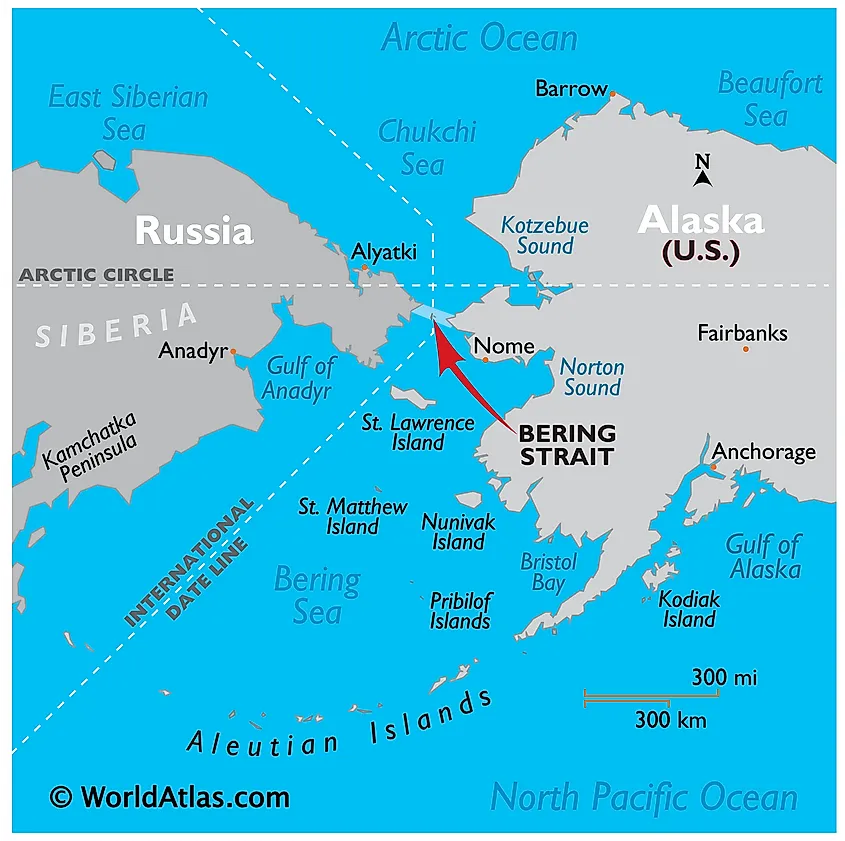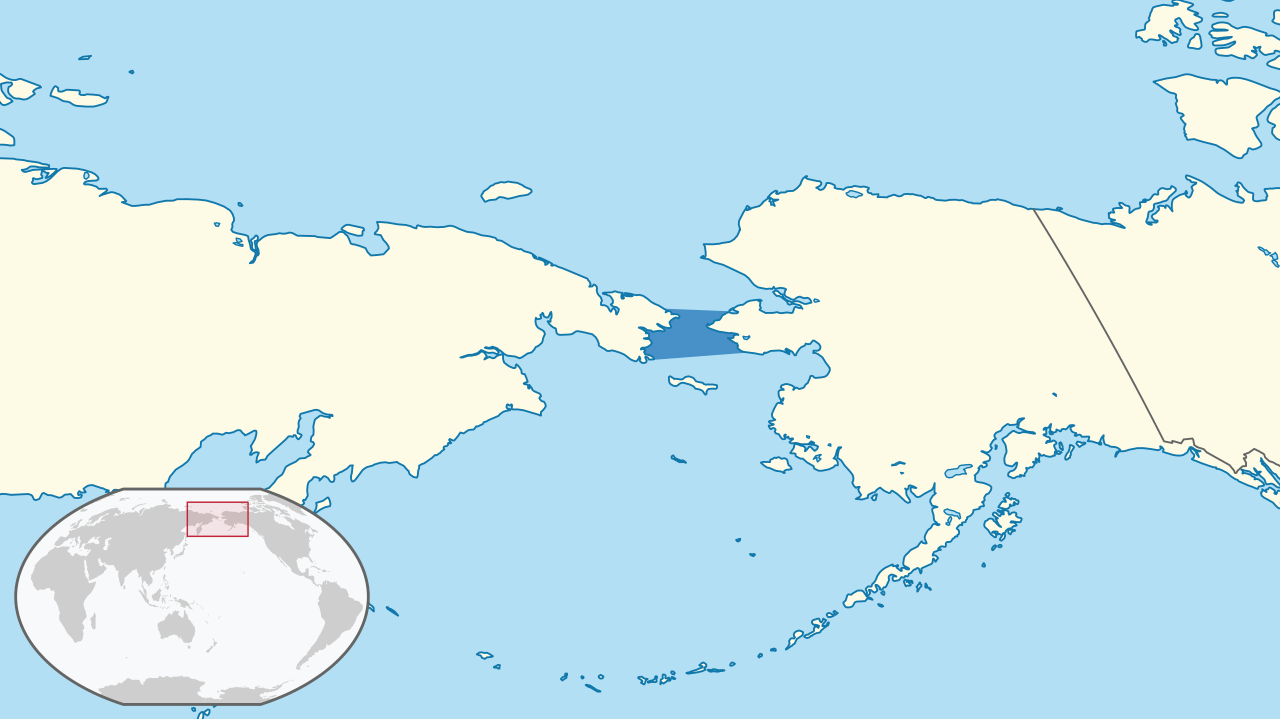The international date line splits the bering strait in half meaning the russian side is 21 hours ahead of the american side despite being so close to each other

The International Date Line: Dividing the Bering Strait and Time Itself

The Bering Strait, a narrow expanse of water separating the northeasternmost point of Eurasia (Russia) from the northwesternmost point of North America (Alaska), is a fascinating natural phenomenon. It not only serves as a vital thoroughfare for marine transportation, but it also acts as a geographical and temporal boundary. Intriguingly, the International Date Line bifurcates the Bering Strait, creating a time difference of 21 hours between the Russian and American sides.
The Bering Strait: A Connection between Two Continents

Spanning approximately 53 miles (85 kilometers) at its narrowest point, the Bering Strait connects the Chukchi Sea in the Arctic Ocean to the Bering Sea in the Pacific Ocean. It serves as a maritime bridge linking the Russian Far East’s easternmost landmass (Chukotka Autonomous Okrug) and Alaska’s westernmost region. This strategic gateway facilitates trade, scientific expeditions, and cultural exchanges between Asia and North America.
The International Date Line: A Timezone Separator
While the Bering Strait’s physical division is impressive, its role as a temporal boundary is equally captivating. Generally following the 180° meridian, the International Date Line not only separates calendar dates but also marks a significant time difference. On the Russian side, known as Big Diomede Island, it is 21 hours ahead of its American counterpart, Little Diomede Island.
The Unique Time Discrepancy: Close, Yet Temporally Distinct
It might seem peculiar that two landmasses situated so close to each other can experience such a substantial time difference. However, this can be attributed to the adoption of artificial constructs like time zones and the International Date Line to ensure practicality in timekeeping and global synchronization.
To understand this temporal discrepancy, we must examine the concept of standard time. The Earth’s rotation divides the planet into 24 time zones, each representing a one-hour difference. However, due to geopolitical factors, time zones often deviate from strict longitude boundaries to accommodate political, economic, or cultural unity within a specific region.
In the case of the Bering Strait, Russia observes Moscow Standard Time (MSK) throughout its vast territory, including Big Diomede Island. Meanwhile, Alaska adheres to Alaska Standard Time (AKST) on Little Diomede Island. As Russia spans across multiple time zones, Big Diomede Island finds itself 21 hours ahead of Little Diomede Island, despite being a mere 2.4 miles (3.8 kilometers) apart.
A Bridge Connecting Continents and Time Zones
The Bering Strait’s dual nature—across both geographical and temporal spheres—symbolizes the intricate interplay between physical and man-made boundaries. This phenomenon captures our imaginations and highlights the diversity of our planet.
Explorers, scientists, and travelers adventure through this unique junction to witness firsthand the spectacular scenery and unique cultures found on either side of the Bering Strait. With its strategic location, it continues to foster connections between Asia and North America, both economically and culturally.
Whether observing the Russian side’s awe-inspiring natural landscapes or exploring the rich biodiversity on the Alaskan side, the Bering Strait’s allure is undeniable. Not only does it serve as a physical connection, but it also offers us a glimpse into the intriguing complexity of time zones and global synchrony.
Source: WorldAtlas
Related Posts
Quick Links
Legal Stuff

